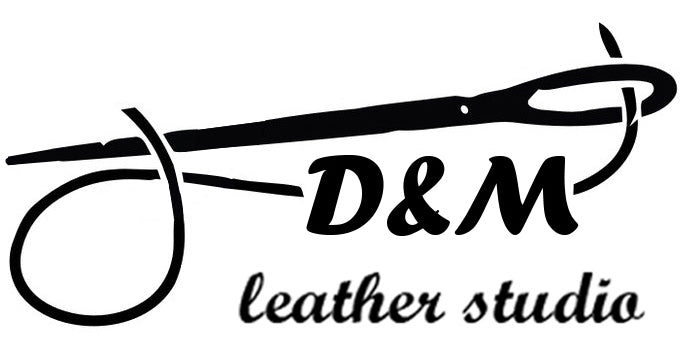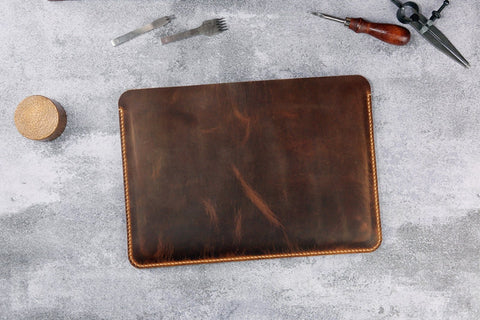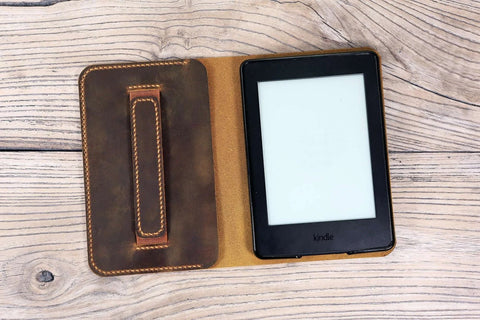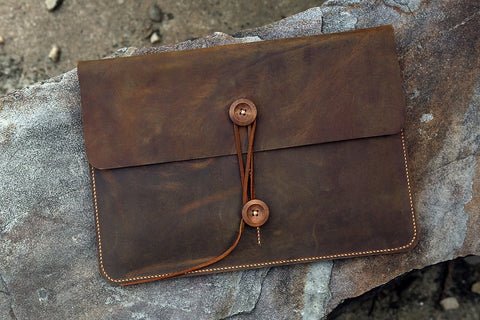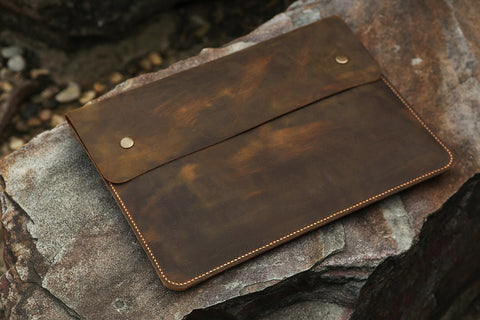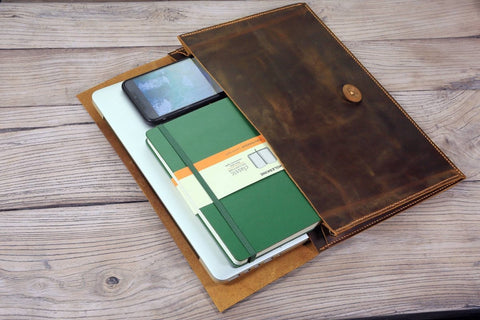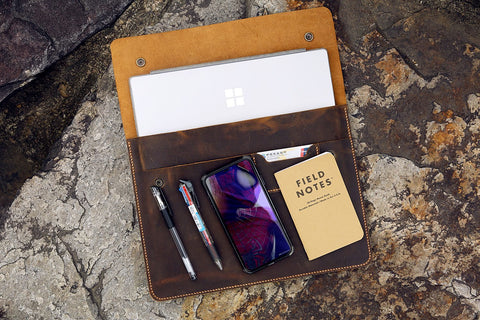The Timeless Appeal of Handcrafted Leather: Why It Never Goes Out of Style
"The Art of Craftsmanship: Exploring the Skill Behind Leather Crafting"
In the realm of artisanal crafts, few materials tell a story as richly as leather. Its journey from hide to heirloom embodies a blend of tradition and innovation, an alchemy of skill and passion.
D&M Leather Studio: Pioneering Craftsmanship in the Modern Age
Leather crafting, deeply rooted in history, is beautifully carried forward by teams like D&M Leather Studio. Starting in a modest sewing room in 2010, we have grown into a spacious studio, dedicated to creating distressed leather goods with a vintage appeal.
Hand Stitching: The Heart of Durability
The art of hand stitching is central to leather crafting. This technique, employing the saddle stitch, is more labor-intensive but ensures unparalleled durability. It's a method that prevents the unraveling of stitches, standing as a testament to the longevity of handcrafted products.
The Timeless Material: Leather's Unique Appeal
Leather's timeless appeal lies in its unique characteristics. It ages beautifully, developing a patina that tells the owner's story. This aging process adds character and depth, making each piece a distinct work of art.

The Personal Touch: Artisans' Stories in Leather
Handcrafted leather goods reflect the personal story of the maker. Each artisan's unique techniques and styles make every creation one-of-a-kind, more than just items but reflections of their journey, skills, and creativity.

Conclusion: Upholding the Tradition of Craftsmanship
In a world dominated by mass production, handcrafted leather stands as a beacon of quality and sustainability. It symbolizes the enduring beauty of artisanal craftsmanship and the values of creating something lasting and meaningful.
"A History Woven in Hide - Tracing Leather's Journey Through Time"
Throughout history, leather has been a symbol of both utility and luxury, evolving through time while retaining its fundamental value. In this journey, the process of hand-stitching leather goods has remained a constant, symbolizing the blend of tradition and craftsmanship.
The Origins of Leather Crafting
The art of leather crafting dates back to ancient civilizations where it was used for clothing, shelter, and tools. Early methods involved drying and treating animal hides with natural materials, a process that laid the foundation for modern tanning.

Tanning: Transforming Hide into Leather
Tanning is crucial in leather processing, turning raw hides into durable, workable leather. Traditionally, tanning used natural substances like tree bark, but modern methods have introduced chemical processes for efficiency.

The Art of Cutting and Shaping
Once tanned, leather is meticulously cut and shaped. This requires precision and an understanding of the leather's grain and texture. The cut pieces form the basis of the final product, whether it's a wallet, bag, or belt.

Hand Stitching: A Testament to Durability
Hand stitching, a method still revered for its durability and aesthetic, is at the heart of leather crafting. Unlike machine stitching, hand-stitched leather goods use techniques like the saddle stitch, ensuring that even if one stitch breaks, the rest remain intact.

Finishing Touches: From Crafting to Creation
The final stage involves adding hardware, such as buckles and zippers, and applying finishes to protect the leather. This stage transforms the stitched leather into a functional and stylish product.

Preserving a Tradition
In an era of mass production, hand-stitched leather goods stand out for their quality and longevity. This traditional process not only creates beautiful and durable items but also keeps a centuries-old craft alive.
"Eco-Friendly and Enduring: Understanding Leather's Sustainable Side"
In the realm of fashion and craftsmanship, leather has often been debated in terms of sustainability. However, when considered holistically, leather presents an eco-friendly and enduring option in a world overwhelmed with fast fashion and disposable products.
Sustainable Sourcing: A Responsible Beginning
Sustainability in leather production starts with responsible sourcing. Ethically sourced leather often comes from the by-products of the food industry, ensuring minimal waste. This approach respects the value of natural resources and supports a more circular economy.

Tanning: Moving Towards Greener Practices
Historically, tanning was criticized for its environmental impact. However, recent innovations in tanning technology have seen a shift towards more eco-friendly methods, like vegetable tanning, which uses natural materials and is less harmful to the environment.
Durability: A Key to Sustainability
One of leather's most sustainable attributes is its durability. High-quality leather products can last for decades, reducing the need for frequent replacements. This longevity means less waste and a lower environmental footprint over time.

Biodegradability: Leather's Natural Advantage
Unlike synthetic alternatives, genuine leather is biodegradable. It breaks down naturally over time, reducing its impact on landfill and the environment.
Upcycling and Recycling: Giving Leather New Life
The leather industry is increasingly embracing upcycling and recycling, transforming scraps and old leather goods into new products. This approach maximizes resource use and minimizes waste.
Conclusion: A Sustainable Future for Leather
Leather, when produced and used responsibly, represents a sustainable choice in the material world. Its durability, biodegradability, and potential for recycling and upcycling highlight leather's enduring and eco-friendly side.
"Investing in Heirlooms: Why Leather Goods Are Timeless Treasures"
Leather goods have long been cherished for their durability and elegance, evolving from simple utility items to symbols of sophistication and status. This transition is not just a tale of fashion but a story of craftsmanship and heritage, particularly in the realm of hand-stitched leather products.
The Evolution of Leather Craftsmanship
D&M Leather Studio, exemplifies the journey from a small sewing room to a spacious studio, showcasing a dedication to creating quality distressed leather goods. Their focus on full-grain distressed leather captures the essence of vintage and retro aesthetics, highlighting the timeless appeal of leather goods.renowned for its quality handcrafted leather goods, offers a range of products that exemplify this lasting value.

Leather Journal: Chronicles of Life
Leather journals are not just for writing; they become repositories of memories and thoughts, aging beautifully as they store your personal history. D&M's leather journals blend utility with timeless charm, making them perfect heirloom pieces.

MacBook Cases: Protective Elegance
In our digital age, a MacBook case becomes an essential accessory. D&M’s leather MacBook cases provide robust protection with a classic aesthetic, turning a functional item into a stylish statement piece.

Moleskine Covers: A Touch of Class
The classic Moleskine notebook gains an extra layer of sophistication with D&M's leather covers. These covers not only enhance the notebook's appearance but also protect it, making your everyday note-taking a luxurious experience.

iPad Cases: Modern Meets Traditional
Blending modern technology with traditional craftsmanship, D&M’s leather iPad cases offer a unique combination of protection and style, ensuring your device stays safe while exuding elegance.

Men's Wallets: Timeless Utility
A man's wallet is more than just an item to hold cards and cash; it’s a reflection of personal style. D&M’s men’s leather wallets are designed for both functionality and longevity, growing more characterful with age.It can carry your phone,and can be used to a leather bag for carrying cards.


Leather Binders: Organizational Elegance
For those who value organization, a leather binder is an excellent investment. D&M’s binders are not just practical; they’re also stylish and durable, perfect for professional or personal use.
In conclusion, investing in leather goods from D&M Leather Studio is more than just a purchase; it's an investment in pieces that gain value and character over time, becoming cherished heirlooms to be passed down through generations.
